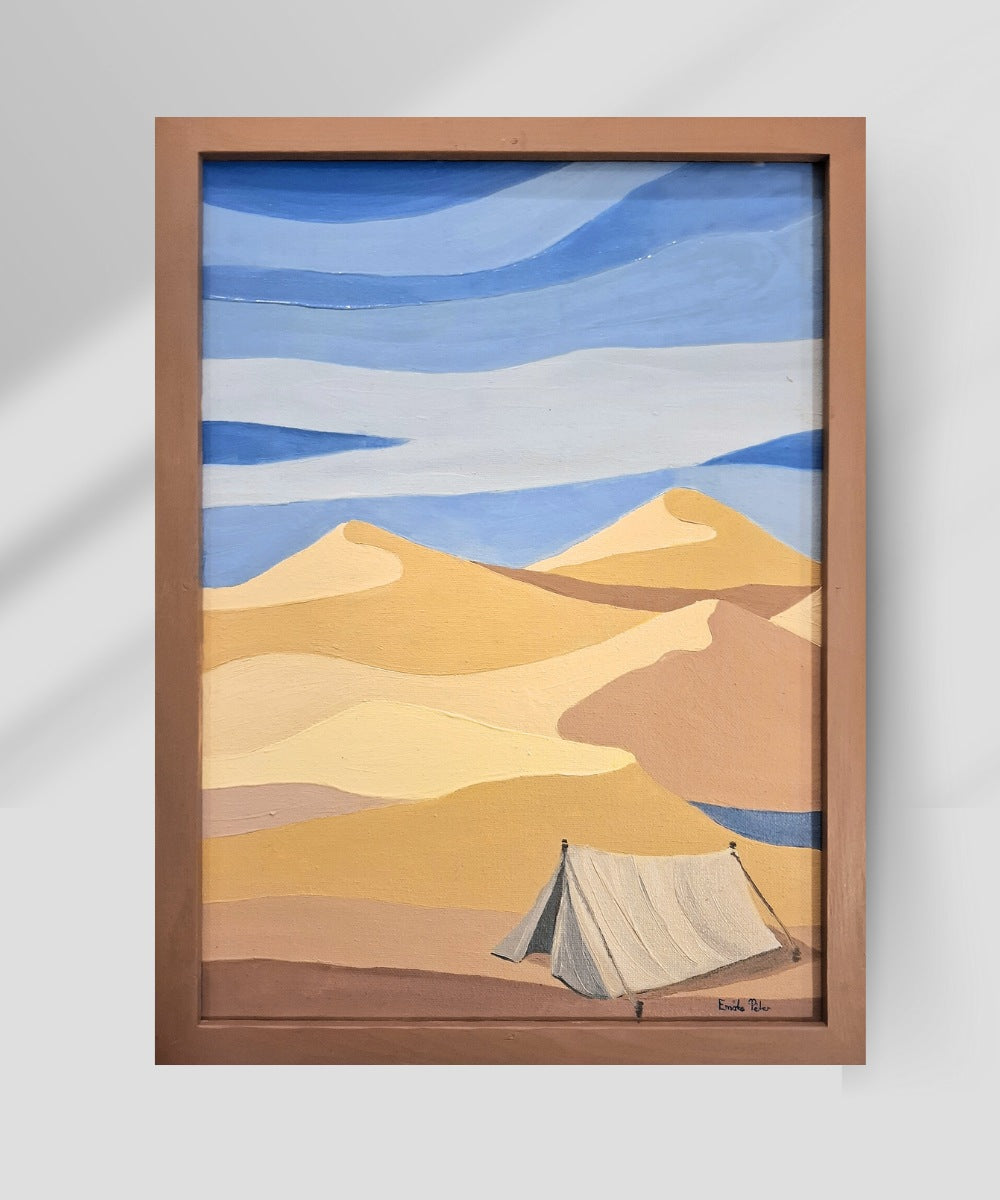
The Story of the Desert Sea oil painting
In the relentless heat of July 1895, Captain Palmer established his expedition camp amid the rolling dunes of the Sahara. His detailed journal, kept for the Royal Geographical Society, documented the harsh beauty of this seemingly infinite landscape where sand replaced water in nature’s grand design.
The desert sea stretched beyond the horizon in every direction, its sun-baked surface rippling like golden waves frozen in time. Palmer’s precise measurements and observations revealed the unique characteristics of this particular region, where dunes could reach heights of over fifty feet and shift several meters in a single season.
Life in the Desert Sea
Palmer’s canvas tent stood as a solitary human marker in the vast desert, a temporary haven erected with practiced efficiency. The bleached fabric offered precious shade as the midday sun beat down mercilessly on the landscape. Inside, his expedition equipment was arranged with military precision—maps, scientific instruments, and water reserves carefully organized for maximum efficiency.
Though exhausted from traversing the challenging terrain, Palmer meticulously recorded the day’s findings before allowing himself rest. The next morning would bring further exploration toward the promised oasis, but for now, this temporary settlement amid the Desert Sea offered a moment of respite and reflection.
This scene, captured in Palmer’s expedition journals and geographical surveys, has been immortalized in our painting “Desert Sea”—a testament to human determination against the backdrop of nature’s most unforgiving yet captivating landscape.
The Story of the Starlit Dunes oil painting
In December 1895, Captain Palmer established his solitary camp among the Arabian desert’s rolling terrain. As darkness descended, the explorer prepared for a night of celestial observation, an important aspect of his expedition for the Royal Geographical Society.
Palmer’s journal described how the landscape transformed at nightfall. “The Starlit Dunes create perfect conditions for astronomical work,” he wrote. “The sand formations that challenged us by day now serve as natural observatories.” From his position in a small valley, Palmer had an unobstructed view of the heavens, free from the light pollution of civilization.
Mapping the Skies
With methodical precision, Palmer documented the positions of stars and constellations visible from this remote location. His leather-bound journal filled with careful notations and sketches comparing the night sky as viewed from these foreign Starlit Dunes to what he knew from Scotland.
“One discovers a different perspective on familiar constellations when viewed across the Starlit Dunes,” Palmer noted. He meticulously recorded these observations, contributing valuable data to the Society’s understanding of astronomical navigation in different parts of the globe.
The Explorer’s Solitude
Before retiring to his tent, Palmer made one final entry: “There is perhaps no better place for contemplation than alone in the starlit dunes, where one feels the true scale of exploration — a single man mapping the unknown between sand and stars.”
This authentic moment from Palmer’s expedition journals inspired our painting “Starlit Dunes”— capturing the essence of discovery that defined the golden age of exploration.








